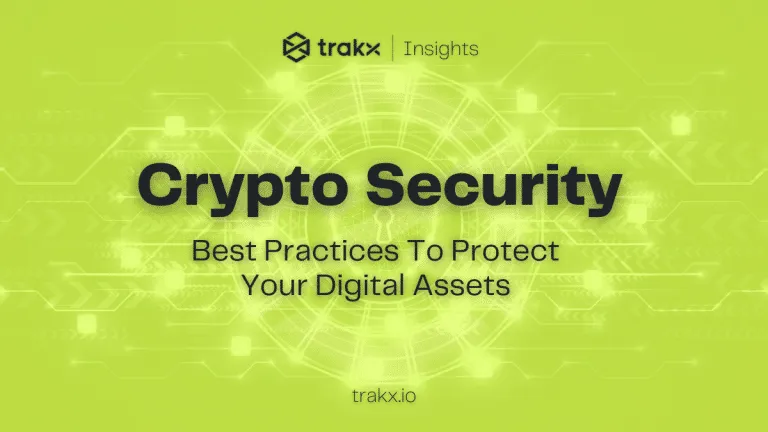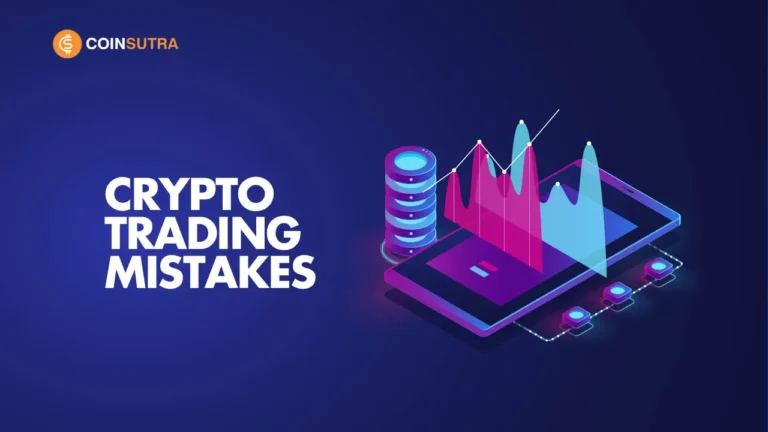
Cryptocurrency mining has emerged as a cornerstone of the digital currency ecosystem, enabling the validation and recording of transactions on the blockchain while also rewarding participants with newly created coins. For beginners, the concept of mining can be both intriguing and complex, raising questions about how it works, its significance, and the various methods available. This article will delve into the fundamentals of cryptocurrency mining, providing a comprehensive overview for those new to the field.
Understanding Cryptocurrency Mining
What Is Cryptocurrency Mining?
At its core, cryptocurrency mining is the process of validating transactions on a blockchain network. Miners use powerful computers to solve complex mathematical problems that secure the network. When a miner successfully solves these problems, they add a new block of transactions to the blockchain and are rewarded with cryptocurrency.
The Role of Miners
Miners play a crucial role in maintaining the integrity and security of blockchain networks. Here’s how it works:
- Transaction Verification: Every transaction made in a cryptocurrency network is grouped into blocks. Miners verify the authenticity of these transactions by checking for fraud or double-spending.
- Solving Complex Problems: To add a block to the blockchain, miners must solve a cryptographic puzzle. This process involves significant computational power, as miners compete to find a solution.
- Block Creation: Once a miner successfully solves the puzzle, they create a new block, which is added to the blockchain. This action is recorded across all nodes in the network, ensuring transparency and security.
- Rewards: Miners receive rewards for their efforts in the form of newly minted coins (block rewards) and transaction fees paid by users. The block reward typically decreases over time, following a predetermined schedule, a process known as “halving.”
Why Is Mining Important?
Mining is fundamental to the functioning of cryptocurrencies for several reasons:
- Decentralization: Mining helps maintain the decentralized nature of cryptocurrencies. Instead of relying on a central authority, miners collectively validate transactions and secure the network.
- Security: The computational power required for mining makes it challenging for malicious actors to attack the network. The more miners there are, the more secure the network becomes.
- Incentivization: The rewards provided to miners incentivize individuals to participate in the network, ensuring that it remains operational and secure.
Different Types of Cryptocurrency Mining
Cryptocurrency mining can be categorized into several methods, each with its own advantages and challenges.
1. Proof of Work (PoW)
Proof of Work is the original consensus mechanism used by many cryptocurrencies, including Bitcoin and Ethereum (prior to its transition to Proof of Stake). In PoW mining:
- Miners compete to solve cryptographic puzzles.
- The first miner to solve the puzzle gets to add a block to the blockchain and receives a reward.
- The difficulty of puzzles adjusts over time to ensure that blocks are added at a consistent rate.
Advantages of PoW
- Security: PoW is considered highly secure due to the computational power required to attack the network.
- Decentralization: It promotes decentralization as anyone with the necessary hardware can participate.
Disadvantages of PoW
- Energy Consumption: PoW mining consumes significant energy, leading to environmental concerns.
- Centralization Risks: Over time, mining can become centralized in regions with cheap electricity, creating mining farms.
2. Proof of Stake (PoS)
Proof of Stake is an alternative consensus mechanism that requires validators (not miners) to hold and “stake” a certain amount of cryptocurrency to participate in the block creation process.
- Validators are chosen to create new blocks based on the number of coins they hold and are willing to “stake.”
- PoS is seen as a more energy-efficient alternative to PoW.
Advantages of PoS
- Energy Efficiency: PoS requires significantly less energy compared to PoW.
- Lower Barriers to Entry: Anyone with a minimum amount of cryptocurrency can participate in staking.
Disadvantages of PoS
- Wealth Concentration: Wealthier individuals may have more influence in the network, potentially leading to centralization.
- Less Proven Security: While PoS has shown promise, it is less tested than PoW.
3. Cloud Mining
Cloud mining allows users to rent computing power from a mining company instead of investing in hardware. Users pay a fee to access mining power, and in return, they receive a portion of the rewards.
Advantages of Cloud Mining
- No Hardware Costs: Users do not need to invest in expensive hardware or worry about maintenance.
- Ease of Use: It’s a simple way for beginners to get involved in mining.
Disadvantages of Cloud Mining
- Less Control: Users have limited control over the mining process.
- Scams: The cloud mining industry has seen numerous scams, so it’s crucial to choose reputable providers.
4. GPU Mining
GPU mining involves using graphics processing units (GPUs) to mine cryptocurrencies. This method is popular for mining altcoins, as it is more accessible than ASIC mining.
Advantages of GPU Mining
- Versatility: GPUs can mine various cryptocurrencies, allowing miners to switch coins based on profitability.
- Lower Entry Costs: Many miners already own gaming PCs with GPUs.
Disadvantages of GPU Mining
- Lower Efficiency: Compared to ASICs, GPUs are generally less efficient for mining certain coins.
- Market Volatility: The profitability of GPU mining can fluctuate based on cryptocurrency prices.
5. ASIC Mining
Application-Specific Integrated Circuits (ASICs) are specialized hardware designed specifically for mining cryptocurrencies. ASIC miners are highly efficient but can be costly.
Advantages of ASIC Mining
- High Efficiency: ASIC miners are specifically designed for one task, making them more efficient than general-purpose hardware.
Disadvantages of ASIC Mining
- High Cost: The initial investment for ASIC miners can be significant.
- Limited Flexibility: ASICs are often designed for specific cryptocurrencies, limiting their usability.
Getting Started with Cryptocurrency Mining
Step 1: Choose Your Cryptocurrency
Before you start mining, you need to decide which cryptocurrency to mine. Factors to consider include:
- Profitability: Research the potential profitability of the coin based on current market conditions and mining difficulty.
- Mining Method: Consider the mining method (PoW, PoS, etc.) that aligns with your goals and resources.
- Community and Support: Choose a cryptocurrency with an active community for support and resources.
Step 2: Acquire Mining Hardware
Your choice of hardware will depend on the mining method and cryptocurrency you choose. Here are some options:
- ASIC Miners: If you opt for PoW mining of Bitcoin or other ASIC-friendly coins, consider investing in an ASIC miner.
- GPU Rigs: For GPU mining, you can build a custom rig with multiple GPUs to maximize mining power.
- Cloud Mining Contracts: If you prefer a hassle-free option, consider purchasing cloud mining contracts from reputable providers.
Step 3: Set Up a Wallet
Before you start mining, you need a cryptocurrency wallet to store your earnings. Here are some types of wallets:
- Hardware Wallets: These are physical devices that store your private keys offline, providing excellent security. Examples include Ledger and Trezor.
- Software Wallets: These are applications you can install on your computer or mobile device. While convenient, they may be more vulnerable to attacks.
- Web Wallets: These wallets are accessible via a web browser. While easy to use, they come with higher security risks.
Step 4: Choose Mining Software
Once you have your hardware and wallet set up, you need to choose mining software. The software will connect your hardware to the blockchain network and facilitate the mining process. Here are some popular options:
- CGMiner: A popular open-source mining software compatible with various hardware.
- BFGMiner: Similar to CGMiner, BFGMiner is designed for ASICs and FPGA mining.
- NiceHash: A marketplace that allows you to sell your hashing power to buyers who want to mine specific coins.
Step 5: Join a Mining Pool
Mining on your own can be challenging, especially for beginners. Joining a mining pool allows you to combine your hashing power with other miners, increasing your chances of successfully mining a block. Here are some considerations:
- Pool Fees: Most mining pools charge a fee (usually a percentage of your earnings), so choose a pool with reasonable fees.
- Payout Structure: Understand the payout structure of the pool, including how rewards are distributed.
- Reputation: Research the pool’s reputation and reliability within the mining community.
Step 6: Start Mining
With your hardware, wallet, mining software, and pool set up, you’re ready to start mining! Follow these steps:
- Install Mining Software: Download and install the mining software of your choice.
- Configure the Software: Input your wallet address and pool information into the mining software settings.
- Start Mining: Launch the software and monitor your mining progress. Depending on the cryptocurrency and network conditions, you may start earning rewards relatively quickly.
Understanding Mining Rewards and Challenges
Mining Rewards
The rewards for mining vary depending on the cryptocurrency, mining method, and network conditions. Here are the primary components of mining rewards:
- Block Rewards: When a miner successfully adds a block to the blockchain, they receive a block reward, which is typically a fixed number of coins.
- Transaction Fees: In addition to block rewards, miners also earn transaction fees from the transactions included in the block. Transaction fees can vary based on network demand.
Challenges of Cryptocurrency Mining
While mining can be lucrative, it also comes with several challenges:
- High Competition: As more miners enter the market, competition increases, making it harder to earn rewards.
- Market Volatility: Cryptocurrency prices can be highly volatile, affecting the profitability of mining.
- Energy Costs: The energy consumption of mining can lead to high electricity bills, impacting profitability.
- Hardware Costs: Investing in mining hardware can require significant upfront capital, and hardware can become obsolete quickly.
Environmental Impact of Mining
Cryptocurrency mining, especially PoW, has garnered criticism for its environmental impact. The significant energy consumption associated with mining operations raises concerns about carbon emissions and ecological sustainability.
Mitigating Environmental Impact
As awareness of environmental issues grows, many miners and developers are seeking ways to mitigate the impact:
- Renewable Energy: Some mining operations are shifting to renewable energy sources (solar, wind, hydro) to reduce their carbon footprint.
- Energy-Efficient Protocols: The shift towards Proof of Stake and other energy-efficient consensus mechanisms aims to reduce the energy requirements for securing networks.
Future of Cryptocurrency Mining
The future of cryptocurrency mining is likely to be shaped by several trends:
1. Transition to Proof of Stake
Many cryptocurrencies are transitioning from PoW to PoS or other energy-efficient models. This shift could lead to lower energy consumption and increased accessibility for miners.
2. Increased Regulation
As cryptocurrencies gain mainstream attention, regulatory scrutiny is expected to increase. Governments may implement regulations to address issues such as energy consumption and security.
3. Enhanced Mining Technologies
Advancements in mining hardware and software may lead to more efficient mining operations, reducing costs and environmental impact.
4. Rise of Decentralized Mining Pools
Decentralized mining pools may emerge, allowing miners to collaborate without relying on centralized entities, further promoting the decentralized nature of cryptocurrencies.
Conclusion
Cryptocurrency mining is an essential component of the blockchain ecosystem, enabling transaction verification and network security. While it can be complex and challenging, understanding the fundamentals can empower beginners to participate in this exciting field. By choosing the right cryptocurrency, hardware, and software, as well as developing a solid strategy, you can embark on your cryptocurrency mining journey with confidence. As the landscape evolves, staying informed about developments and adapting to changes will be crucial for long-term success in the world of cryptocurrency mining. Happy mining!









